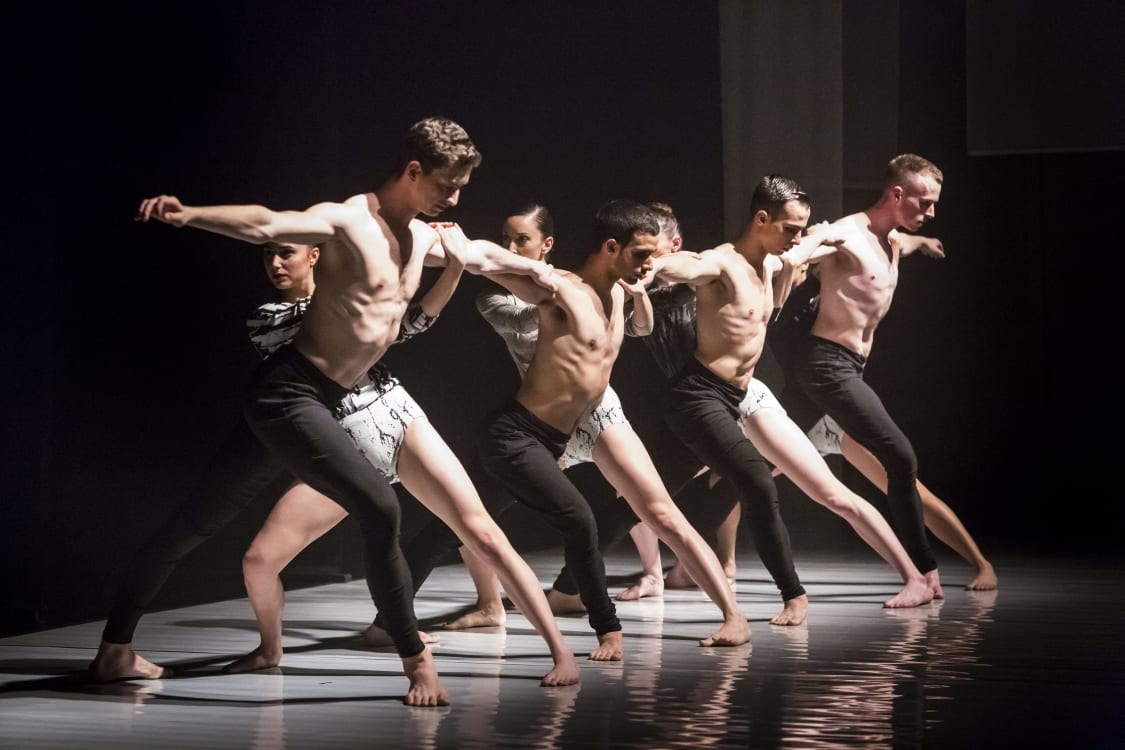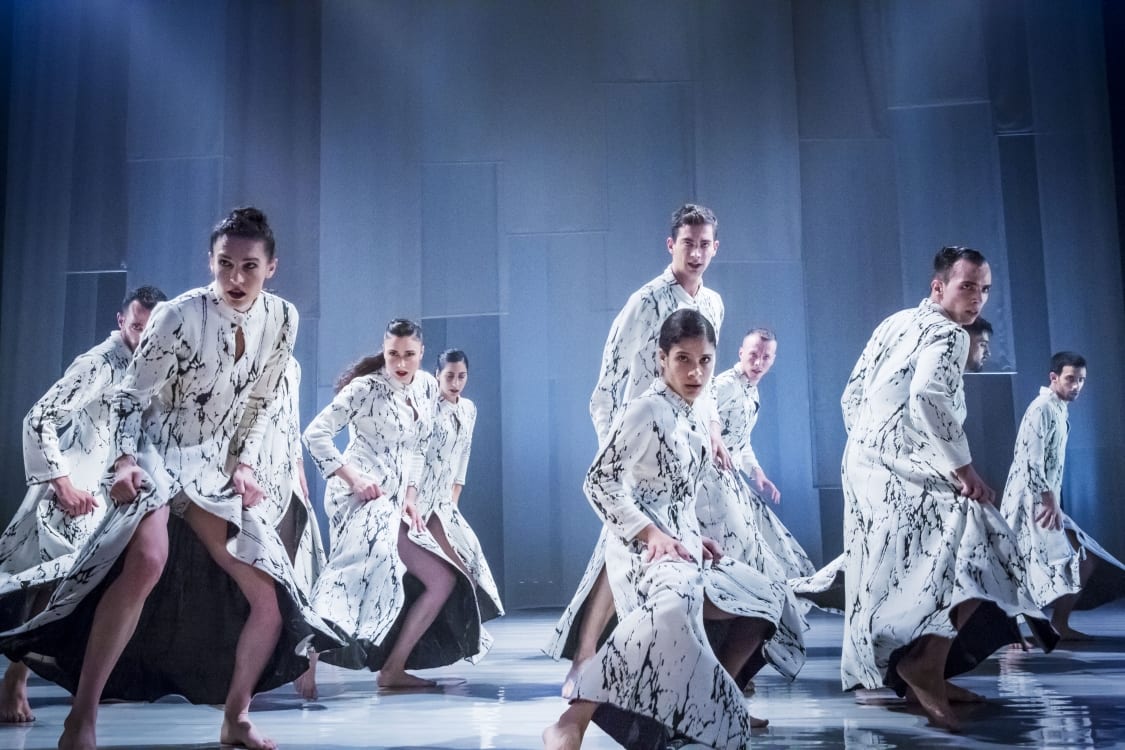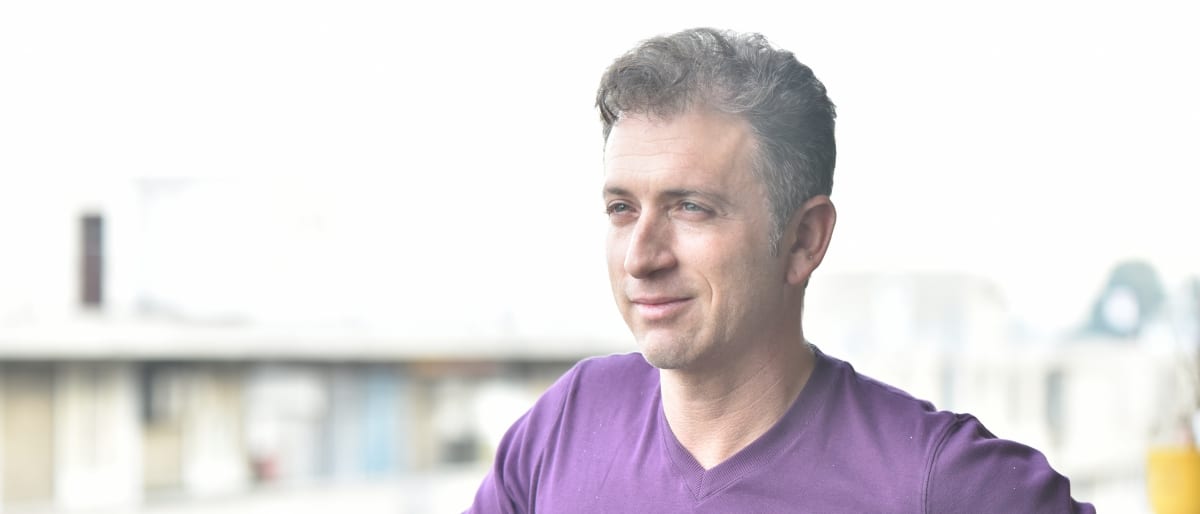Tamir Ginz is an ex-dancer, current director, and resident choreographer of the dance company KAMEA, which he founded in 2002. We met at the magnificent auditorium of Shakespeare Theatre in Gdansk.
KAMEA was chosen to open the special festival of “Israel Culture Week in Gdansk” (28 August to 06 September 2018). The auditorium full to capacity on consecutive nights, largely attended by locals, expressed its appreciation to the performances through standing ovations.
Tamir explains that the company’s name, Kamea, means heirloom, and it attracts traditional as well as new dances.
The company consists of 14 dancers and then a few young dancers as apprentices. There are between 70 and 90 performances per year, with a repertoire of five different programs per season.
Rivka Jacobson: In Gdansk, during Israel Culture Week, your company performed two very different pieces, reflecting different styles. Can you tell something about them? The audience loved both.
Tamir Gintz: I was very proud to come to Gdansk, and to show two pieces from both my old and new repertoires. Carmina Burana has been on the repertoire for 11 years and is the company’s biggest success. It was a commissioned piece by the Kypria festival in Cyprus in 2007 and was later invited to the culture events in the Beijing Olympic games. It really traveled around the world. The piece mostly deals with musicality: the score and the lyrics that was written almost 400 years ago, and whoever uses the text cannot ignore the words. It’s a celebration of love and happiness, wine, desire. The style of the piece is neoclassical compared to what I do these days. I have evolved throughout the last 11 years and that has brought us to the other piece I showed at the premiere. Mnemosyne is my latest creation, and I think that by living and creating in the South of Israel, my style has become warmer, more ‘Israeli’. The arm positionings have moved from the classical way to become more violent; the powers of the music encourage a lot of pelvic movements; it’s rounder, heavier, earthlier and more ritualistic. It’s like having children – they’re very different but I love them both.

RJ: There was a lot of erotica in your interpretation of Carmina Burana.
TG: When I decided to choreograph Carmina Burana, I saw that other choreographers had previously focused on the historic presentation of the priest and the peasants, and fields and they celebrate fortune. It’s very beautiful, but I wanted to do something different, so I brought it into a 21st century setting. It’s slightly inspired by Kubrick’s film Eyes Wide Shut, where the couple seem normal but at night they go to sexual parties, they swap couples and masquerade. It is shocking, but apparently a very realistic portrayal of high society in New York at that time. So, my piece opens in a ritualistic style party that slowly reveals everyone is there to have fun, have sex and to look for freedom. But in the deeper sense, at the end of the piece everyone comes closer as friends.
RJ: What were the inspirations for the costumes. It’s a mixture of 19th century and modern costumes.
TG: The idea was trying to make the new out of the old. We went back to when the music for the piece was written 100 years ago as a starting point for the costumes, and then let them evolve so that by the end, the characters are in their underwear. The sexiness at the end is made by the simplicity of the underwear. And this evolultion complies with the idea that at the beginning, when they are in the big dresses, they are masquerading as the old-times; when in fact really, they have come as young people just to enjoy themselves and their sexuality.
RJ: What about the earlier piece, Mnemosyne?
TG: Mnemosyne is a lot more sophisticated and it was conceived with the help of a colleague of mine, Yoav Michaeli. It came out of a political idea. Over the last few years, I have become interested in making a voice for the political position of Israel and the violence all around us. I had worked with him on my previous piece Neverland, which was a black testimony of where the world is headed. I’m very much a social researcher. I’m very concerned with the fact that culturally, the people of Israel are turning against each other, particularly people of different origins. Is Israel one community with one narrative that everyone must comply with, or are we a family where each member has their own history? We start and end the piece with a ceremony – it looks like a ritual. But then the piece falls into different sections where each persona of the piece reveals a different memory: of loss, love, and defiance. In the end, they all come together as a community. People should be pluralistic.
RJ: Does company also performs for younger audiences?
TG: It’s really important for us to engage with younger people. When we first started, we had performances for 5-year olds that followed Disney narratives, but our strongest point was with teenagers. Teenagers are more prone to develop a love for dance, and maybe they’ll return to us as adults. But dance is always intimidating at first because it is so abstract, so for the younger audiences I make the pieces more communicative and with a stronger narrative. Younger people always look for the true meaning of things, whereas choreographers always want everyone to take their own meaning from the dance. The first piece I made for this audience was Gleech, and that has now been seen by thousands of people across 200 shows. The second was Dance, Dance, Dance, which imitates a competition in a reality show. By appealing to the audience’s interest, it lets them enjoy the piece but also witness a lot of good dancing at the same time.

RJ: Is this something that is sponsored by the Israeli Ministry of Culture?
TG: No. The Israeli Ministry of Culture does not involve itself with the creation or content of any cultural organisation in Israel. The minister of culture has announced that if people stage works that defy the existence of the state of Israel, she will try and undermine their organisation. A lot of people have criticised it, but I agree with it. If you try and defy the state, they shouldn’t then sponsor you. You’re either with it or without it. I know that I have relatives in England and they’re Jewish. They see themselves as Jewish people and British people – you can have a dual loyalty to your heritage and also to the country you’re living in. We are however, supported by the Ministry of Education who sponsor schools to buy our work. To go back to talking of the ministry of culture, they only survey the quantity of work we do, not the content. We have total freedom.
RJ: Is the Israeli audience receptive to dance?
TG: I think the Israeli dance audience is growing non-stop, which is like throughout the rest of the world. Dance is the most difficult art to conceive – you don’t have the spoken word to communicate it – yet it engrosses the youngest audience than any other art. When you go to see serious theatre, and I don’t mean musical theatre, but something at the National or by the Philharmonic Orchestra, sadly most of the audience has white hair. With dance, the audience is of all ages because it is so visual and renovative. I’m very proud to be a creator in that artistic world.
RJ: What’s the next project?
TG: The next project for the company is working with a guest choreographer. Once in a while, I bring in a respectable choreographer from elsewhere in Europe to allow me to rest for a while. It also allows the dancers to branch out of their habit, which is working with me, and get to work with Marco Goecke who is the most renovative choreographer in Europe. At the moment he is resident choreographer for the Netherlands Dance Theatre and Stuttgart Ballet. Right now, he’s choreographing for the Paris Opera. I’ll present a short piece next to Marco’s one evening, which will be called Beautiful Madness. I think because of the horrors we suffered in Israel due to the attacks from Gaza, everyone is traumatised. That’s going to inspire my next piece. The trauma and anguish, maybe even from both sides, but the idea isn’t fully developed yet.
RJ: What is your impression of Gdansk?
TG: I think it is one of the most amazing cities I have ever seen in my life. It has everything in it: beautiful architecture, the young spirit, clubbing, spirit. I will have to come back for some time off. The theatre is inspirational, and I loved having the luxury of performing in it. The Polish people are also very presentable, friendly and well kept. And it’s so much cheaper than Western Europe!

